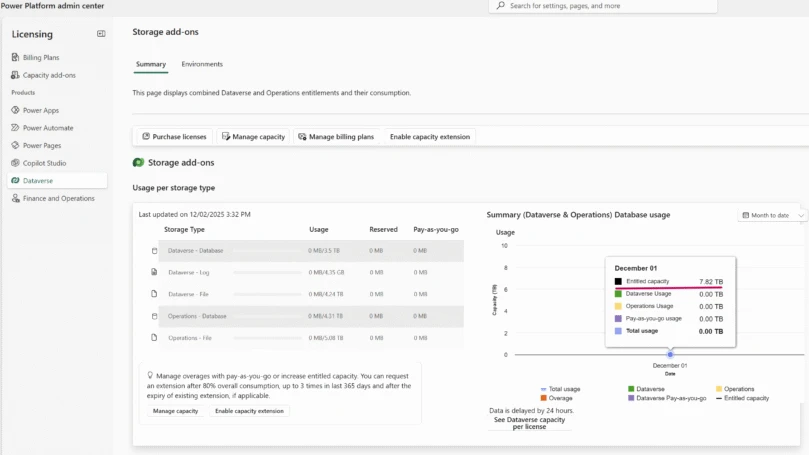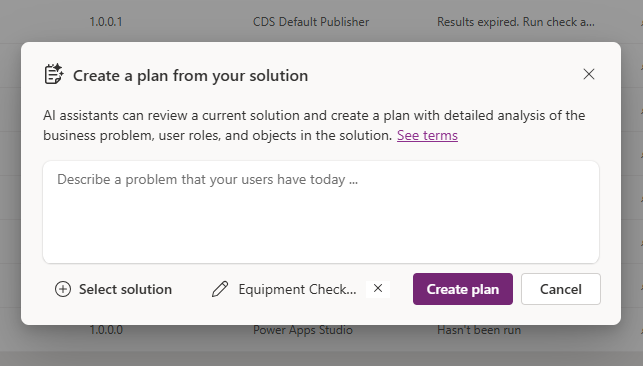One of the largest benefits of low-code tools such as Power Automate is that we have been able to expand our search for folks beyond traditional IT programming. While IT skills are needed, we also can pull from IT-inclined business experts.”
– John Hendrock, Director of Business Applications, US Acute Care Solutions
Alteon Health (recently acquired by US Acute Care Solutions (USACS)) is a leading provider of emergency medicine, hospitalist medicine, critical care, post-acute care, and virtual and home health services serving 200 practice locations in the United States. In this article, we’ll learn how the Alteon Health DevOps team uses Microsoft Power Automate to automatically take 20 million medical records each year from a wide variety of providers and process them into a coherent medical history for each patient that can be used for both care history and billing purposes.
Automation Journey

To understand the adoption of automation at USACS, we need to look back at the history of Alteon Health. The history of automation started over a decade ago at 4M Emergency Systems, which eventually merged with other companies to form Alteon Health. “Automation” in those days were Batch Scripts using Windows Scheduler. In cases where the team was unable to automate a task, they relied on vendors to do this via Perl scripts or similar.
4M and subsequent companies utilized automation to “do more with less.” As they grew, they went in search of a true Automation platform and found WinAutomation (which subsequently became Power Automate for desktop). With Microsoft Power Automate offering a breadth of Robotic Process Automation (RPA) capabilities via desktop flows and Desktop Process Automation (DPA) capabilities via cloud flows, automating manual processes continued to take off.
Eventually with another merger, the company doubled their visit counts and automation continued to significantly contribute to scaling their business. They reduced the need for external vendors who previously handled approximately half of the tasks. As the company has grown, they’ve been able to absorb more visits and more clients without the need to constantly expand the IT or Operations staff.
“I’m extremely proud of what our team has done on the Power Automate platform in just a few months. In the photo, we are wearing our team shirts which translated to English that says, “I will find a way or make one” which through collaboration we have been doing.”
– Mark Norris, DevOps Manager, US Acute Care Solutions
Business Scenario
In a typical patient visit to a hospital, there are various types of information, such as doctor visit records, patient demographics data, timestamps of how long a patient stays in the hospital, medical examination results, and any other supporting documentation for each patient.
USACS provides staffing of various hospitals with required physicians, clinicians, and other practice providers with a total of 3 million patients served each year generating 20 million sets of data from 200 practice locations. Each hospital that USACS works with submits data through a secure file transfer to USACS for billing and other purposes. As each hospital has different medical data systems, some provide data through their own file transfer service, and others use USACS’s infrastructure – resulting in the need for manual formatting and data extraction from many different data formats.
USACS needed an automation solution that could process the different types of data such as text, images, and PDFs, to be used in both patient management and billing systems. Without some form of automation in place, this would have resulted in the need for manual formatting and data extraction from a variety of different data formats, where dozens of people would need to manually process this data 24/7.
“A typical hospital would have around 100 patients each day, and we had dozens of hospitals to receive information from and required a few thousand records in total to be processed per day.”
– Juan Ramos Paniagua, Senior Analyst, US Acute Care Solutions
Power Automate Solution
Using Power Automate desktop and cloud flows, USACS was able to automate processing of millions of records with a team of just five people . Let’s take a deeper look at the automation solution.
To automate the process, combinations of different actions are used to process each set of data. For example, text files are processed with regular expressions (regex) to identify which facility the data originated from . With PDF files, a PDF editing application is used to separate PDF pages. Once all the files are processed, they are sent to the USACS internal systems for billing and account management. This enabled employees to transform their business process from a manual process to exception-based processing – where automation alerts anomalies and employees now need to only deal with failures.
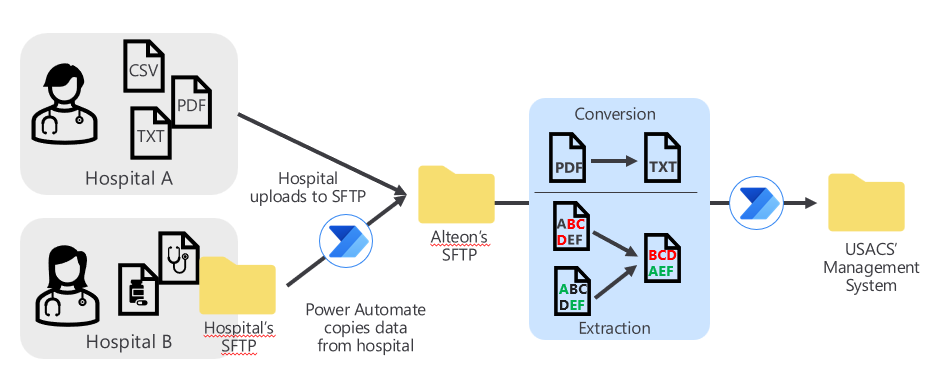
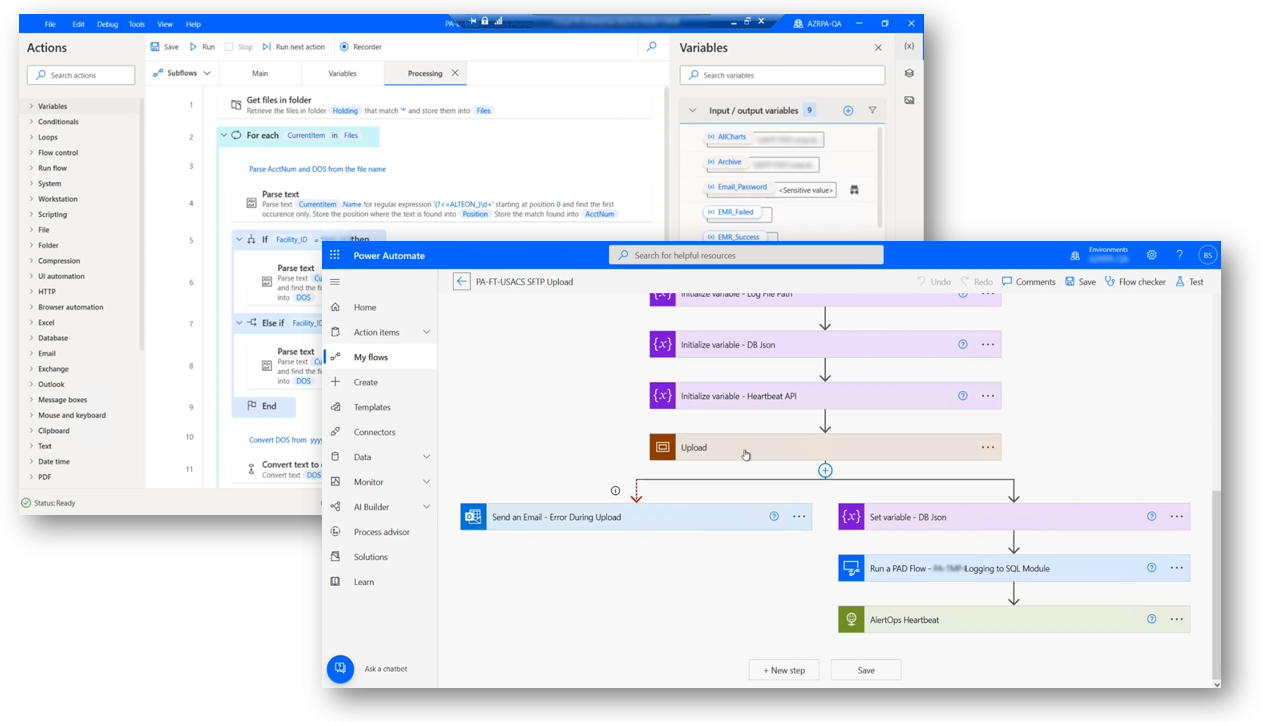
Managing sensitive information
Handling data securely for personal health information is essential for the healthcare industry. USACS used secure inputs and outputs as well as Microsoft Azure cloud services, including Azure Key Vault, to manage sensitive information such as email and database passwords when bridging the data across Power Automate cloud flows and desktop flows.
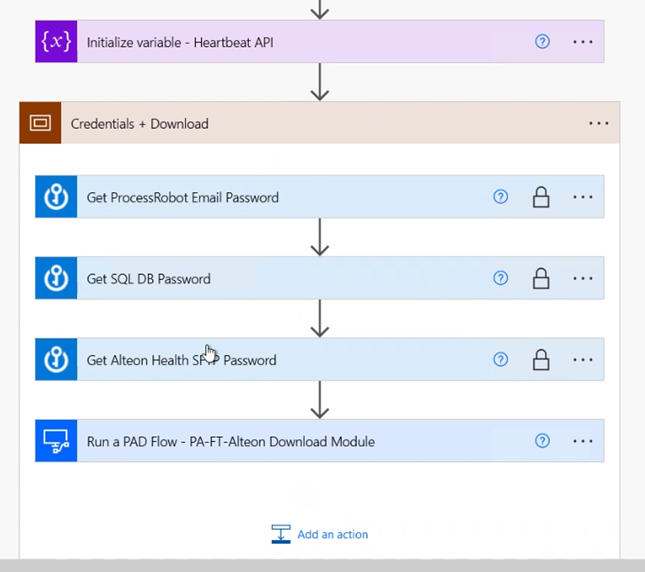
Templatizing desktop flows for easier maintenance
USACS’s RPA team set up Power Automate flows for each automation scenario are scalable and maintainable. The cloud flows are separated by facilities/hospitals, where a particular cloud flow handles certain file types that come from those facilities specifically. The flows are set up to be modularized, like a universal processing module, by passing variables back and forth between cloud flows and desktop flows. This means that USACS’s RPA team had to build the module only once and then provide it with the data it needs, such as metadata or processing.
Having modularized flows made it easy for USACS to maintain a single pattern of automation that would work across many hospitals and patient records. This was facilitated using context variables such as those for facility IDs.
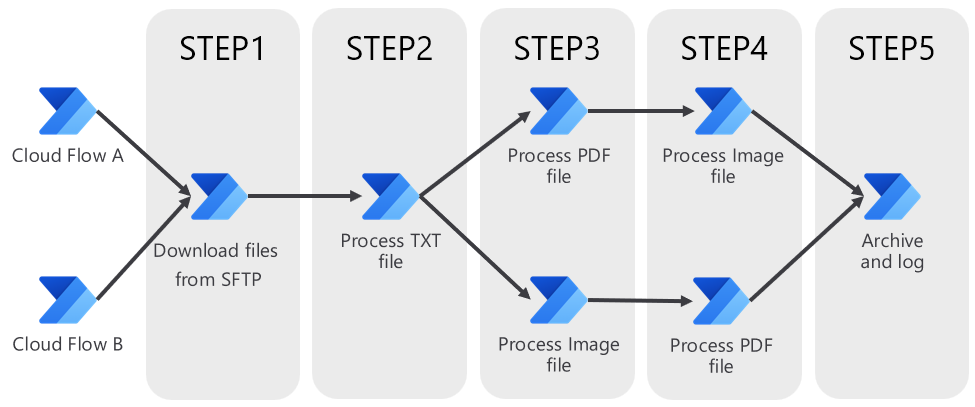
Ensuring a successful automation environment at USACS
As part of the Application Lifecycle Management (ALM) strategy, three environments are set up to ensure that no issues arise when automations are running in production. There are separate Development, Test and Production environments and each automation is managed inside solutions.
Connection references and environment variables are used extensively to ensure that all values can be dynamically updated when migrating from one environment to another.
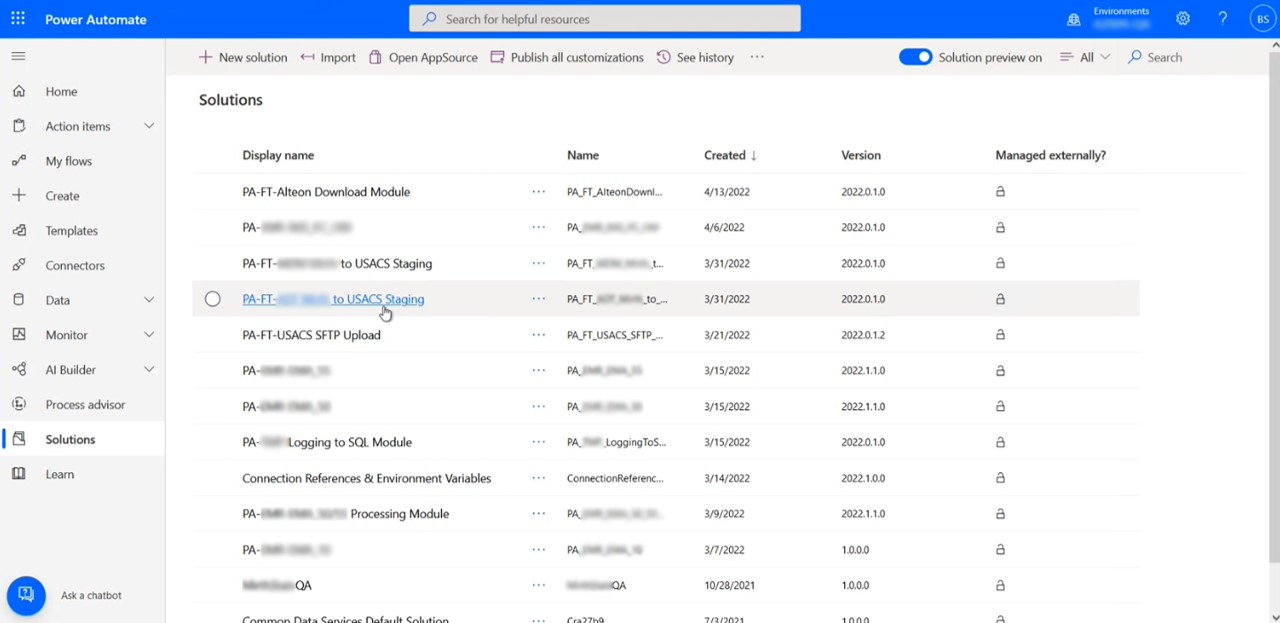
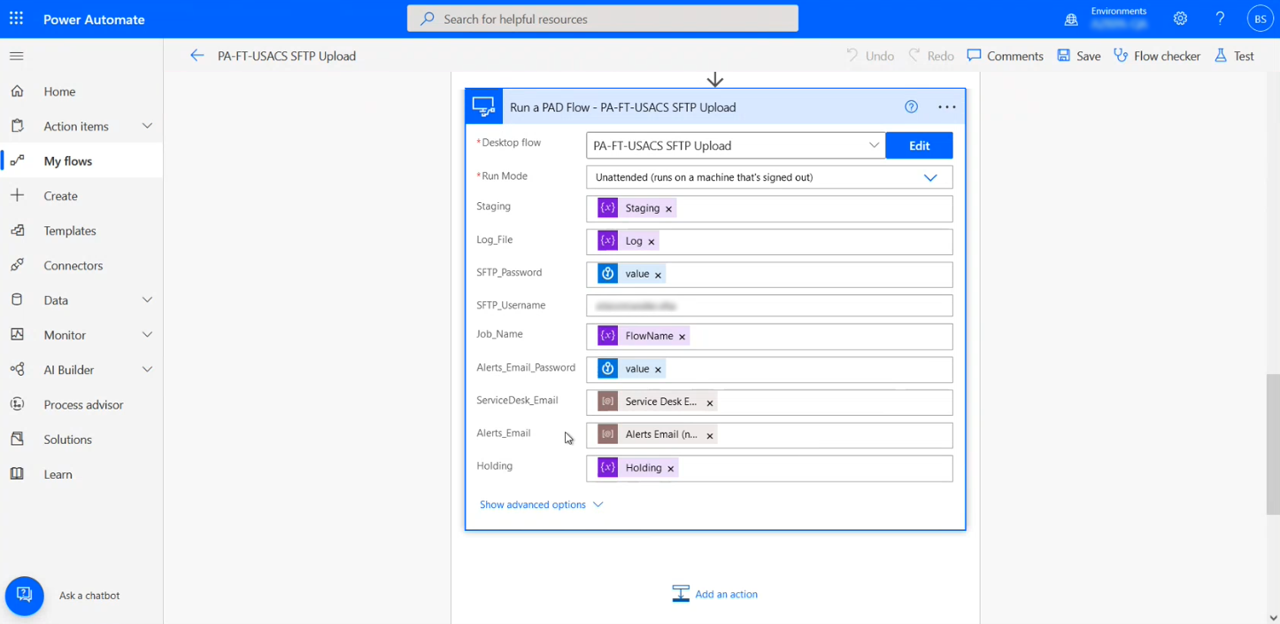
Summary of Benefits
- US Acute Care Solutions could scale their business without needing to hire new staff when new clients/processes are added
- An automation-first culture saves 100,000+ hours worth of work each year
- Employees have transformed their business process from manual processes to exception based processing – where automations alert anomalies and need to only deal with failures
- Integration with Microsoft Azure and its distributed data centers reduces business risk
- Securely process sensitive healthcare data
- Ability to expand IT solution team to include business experts
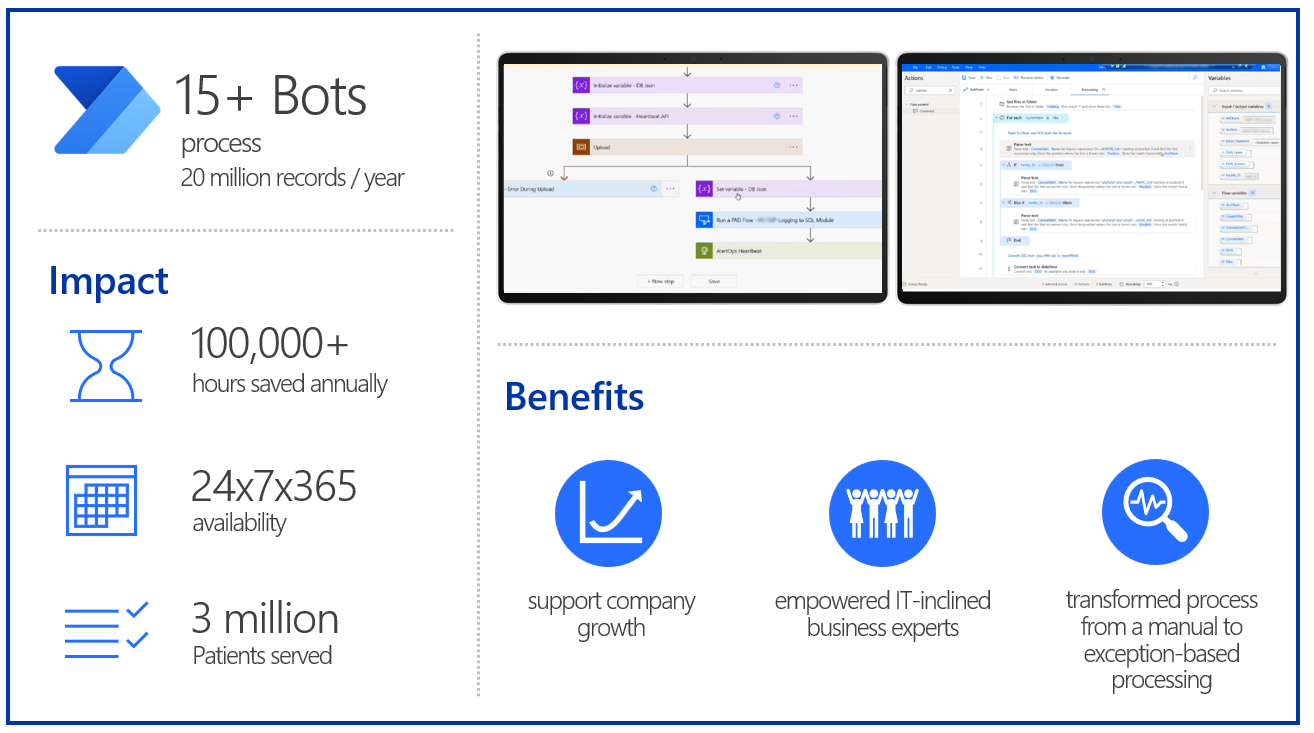
Looking ahead
The recent acquisition by US Acute Care Solutions has created a combined patient volume of over 9 million, looking to grow to 18 million in the next few years. As a next step for the automation team, they are looking into Azure DevOps and potentially setting up a repository for version control – bringing a new level of maturity to the automation program at US Acute Care Solutions.
“If I had to add it all up over the years, we would easily need to double/triple the number of folks that would be necessary to keep the gears turning… not to mention that adding new clients/processes would require new staff. Automation (in whatever form) has saved easily over 100,000+ hours of work, and untold/incalculable vendor costs.“
– John Hendrock, Director of Business Applications, US Acute Care Solutions



